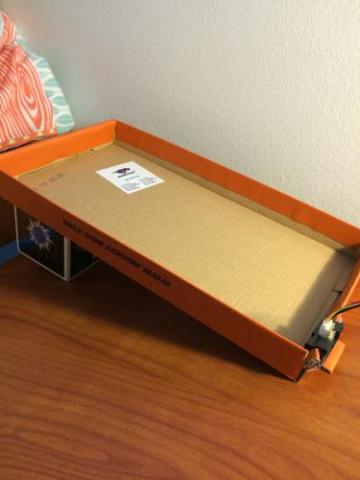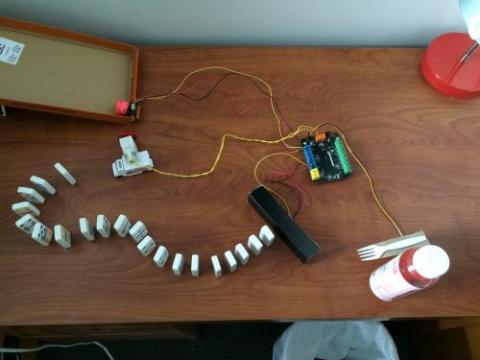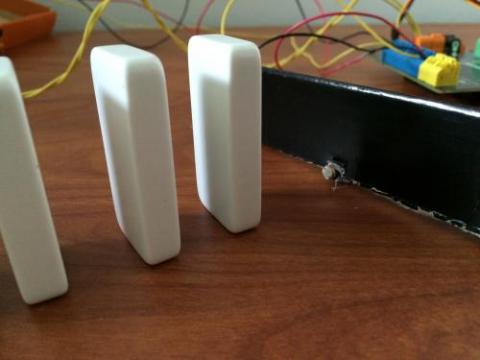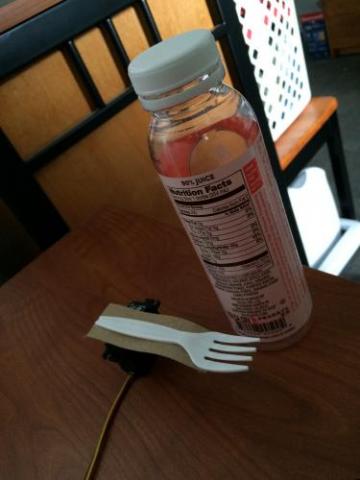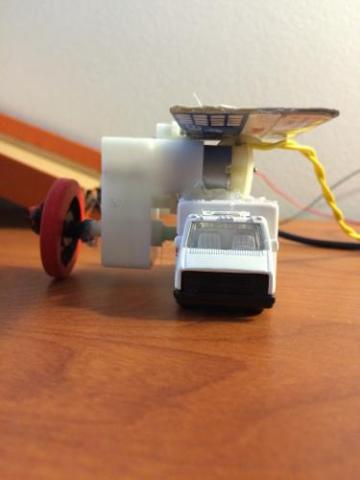Register to receive free access to all teacher materials.
A Robotic Rube Goldberg Machine
Use the Hummingbird Kit to create a robotic Rube Goldberg Machine.
Programming Language
Any language supported by Hummingbird Duo
Subjects
Science
Grades
6-8, 9-12
Free Teacher Materials
Objective & Learning Goals
- The student will be able to recognize and define the six different simple machines.
- The student will be able to calculate the mechanical advantage of the simple machines.
- The student will be able to create a set-up using simple machines that will act as a more complex machine to perform a task.
- The student will be able to describe their design, building, and programming process in a laboratory
journal. - The student will be able to analyze the efficiency of their design and use troubleshooting strategies
in response.
Standards
This projects meets Next Generation Science Standards concerning collisions (MS-PS2-1) and energy (MS-PS3-5 and HS-PS3-3), as well as standards for engineering design (MS-ETS1-1, MS-ETS1-2, and HS-ETS1-2). Students who calculate the mechanical advantage for their simple machine will also meet Common Core algebra standards such as A-CED.A, A-REI-A, and A-REI.B. Finally, this project is aligned with Common Core ELA anchor standards that focus on informative writing (CCSS.ELA-LITERACY.CCRA.W.2-3), research (CCSS.ELA-LITERACY.CCRA.W.7-8,10), and speaking and listening (CCSS.ELA-LITERACY.CCRA.SL.4-6).
Photo Gallery
Form groups of 2-3 students. Each group will design a set-up that will incorporate at least 2 sensors and at least 2 simple machines. This set-up will be used to perform a simple task of the group’s choosing (throwing a bottle into a recycling bin, launching a paper airplane, etc.). The sensors will trigger simple machines in different locations in order to perform this task. In addition, students should incorporate normal, everyday items within the set-up to help with the task (dominoes, etc.). The groups will keep a laboratory journal in which they will document their design, building, and programming process. They will refine and perform troubleshooting activities when necessary – which will also be detailed in the laboratory journal. The groups will present their set-ups to the class and explain their use of simple machines. Note that each student should be responsible for one of the simple machines or the steps using everyday objects.
Students in a more advanced Physics course (i.e. those in 10th-12th grade) will keep measurements of their simple machines and calculate mechanical advantage for those simple machines. Students are expected to write out each step in words.
Note: The two sensors should be different types of sensors (light and distance are suggested). A type of simple machine can be reused, but there must be at least one different type of simple machine being used in addition. There must be at least one section of the set-up that utilizes everyday items.
A possible variation would be to have students connect their respective projects into a much larger Rube Goldberg machine, using extra sensors. For example, one group could include an LED at the end of their project in order to trigger a sensor to start the next group’s machine. This could continue until each group’s project is linked together to create one larger, more complex Rube Goldberg machine.

